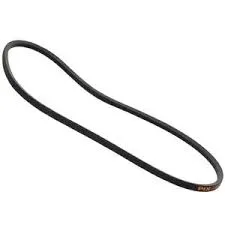- Arabic
- French
- Russian
- Spanish
- Portuguese
- Turkish
- Armenian
- English
- Albanian
- Amharic
- Azerbaijani
- Basque
- Belarusian
- Bengali
- Bosnian
- Bulgarian
- Catalan
- Cebuano
- Corsican
- Croatian
- Czech
- Danish
- Dutch
- Afrikaans
- Esperanto
- Estonian
- Finnish
- Frisian
- Galician
- Georgian
- German
- Greek
- Gujarati
- Haitian Creole
- hausa
- hawaiian
- Hebrew
- Hindi
- Miao
- Hungarian
- Icelandic
- igbo
- Indonesian
- irish
- Italian
- Japanese
- Javanese
- Kannada
- kazakh
- Khmer
- Rwandese
- Korean
- Kurdish
- Kyrgyz
- Lao
- Latin
- Latvian
- Lithuanian
- Luxembourgish
- Macedonian
- Malgashi
- Malay
- Malayalam
- Maltese
- Maori
- Marathi
- Mongolian
- Myanmar
- Nepali
- Norwegian
- Norwegian
- Occitan
- Pashto
- Persian
- Polish
- Punjabi
- Romanian
- Samoan
- Scottish Gaelic
- Serbian
- Sesotho
- Shona
- Sindhi
- Sinhala
- Slovak
- Slovenian
- Somali
- Sundanese
- Swahili
- Swedish
- Tagalog
- Tajik
- Tamil
- Tatar
- Telugu
- Thai
- Turkmen
- Ukrainian
- Urdu
- Uighur
- Uzbek
- Vietnamese
- Welsh
- Bantu
- Yiddish
- Yoruba
- Zulu
ಡಿಸೆ . 06, 2024 23:35 Back to list
ribbed belt\/v-ribbed belt
Understanding V-Ribbed Belts Importance and Applications
V-ribbed belts, commonly known as ribbed belts or serpentine belts, are crucial components in the functioning of modern vehicles and various machinery. These belts are designed to transfer power efficiently between different components, such as the engine and ancillary devices, ensuring optimal performance. In this article, we will explore the structure, function, types, and applications of V-ribbed belts, along with maintenance tips for longevity.
Structure and Function
V-ribbed belts are characterized by their unique design, which consists of multiple longitudinal ribs running parallel to the belt's length. This configuration maximizes the surface area in contact with the pulleys, providing superior grip and reducing slippage. The belt's cross-section resembles the letter V, hence the name.
These belts are typically made from a blend of rubber and fabric, which allows them to be both flexible and durable. The ribs are engineered to ensure optimal tension and fit within the grooves of pulleys. This tight fit helps maintain friction, allowing for efficient transmission of power from the engine to components like the alternator, water pump, air conditioning compressor, and power steering pump.
Types of V-Ribbed Belts
V-ribbed belts come in various types, categorized by their construction and specified applications
1. Standard V-Ribbed Belts These are the most common and are used in general automotive and industrial applications. They are designed for longevity and reliability under various operational conditions.
2. Heavy-Duty V-Ribbed Belts Designed for high-performance vehicles and demanding environments, these belts are made from higher-quality materials to withstand extreme temperatures and tension.
3. Cogged V-Ribbed Belts These belts feature notched ribs, which enhance flexibility and improve performance in tight spaces. They are often used in high-speed applications where reduced vibration is crucial.
4. Poly-V Belts A variation of V-ribbed belts that are utilized in applications requiring a compact design without compromising power transmission. These belts can drive multiple accessories with a single belt.
Applications
V-ribbed belts are widely utilized in various sectors beyond automotive applications. Some of the key applications include
ribbed belt\/v-ribbed belt

- Automobiles In vehicles, V-ribbed belts drive essential components, making them integral to the engine's performance. Regular inspection and timely replacement are necessary to avoid engine failure.
- Industrial Machinery These belts are increasingly used in conveyor systems, manufacturing equipment, and material handling apparatus, where reliable power transmission is crucial.
- Agricultural Equipment V-ribbed belts are found in tractors and harvesters, enabling the efficient operation of cutting, lifting, and plowing mechanisms.
- HVAC Systems They are also prevalent in heating, ventilation, and air conditioning systems, driving fans and compressors that regulate air circulation.
Maintenance Tips
To ensure the longevity and efficiency of V-ribbed belts, regular maintenance is critical. Here are some tips
1. Regular Inspections Routinely check for signs of wear, such as fraying or cracking. Belts should be replaced at the first sign of deterioration.
2. Tension Checks Ensure proper tension is maintained. Both over-tensioning and under-tensioning can lead to premature wear or slippage.
3. Alignment Misalignment of pulleys can cause excessive strain on the belt. Ensure pulleys are aligned correctly during installation and maintenance.
4. Cleanliness Keep the pulley system clean and free of debris. Contaminants can lead to slippage and premature mechanical failure.
5. Follow Manufacturer Guidelines Always refer to the vehicle or machinery manufacturer's specifications for recommended replacement intervals and types of belts.
Conclusion
V-ribbed belts play an indispensable role in the performance of vehicles and machinery across various industries. Understanding their construction, function, and maintenance requirements ensures that users can maximize belt lifespan and efficiency. By recognizing the importance of these belts, industries can continue to operate smoothly and efficiently. Regular inspections and timely replacements will help maintain optimal performance, ultimately contributing to the longevity of mechanical systems.
-
Korean Auto Parts Timing Belt 24312-37500 For Hyundai/Kia
NewsMar.07,2025
-
7PK2300 90916-T2024 RIBBED BELT POLY V BELT PK BELT
NewsMar.07,2025
-
Chinese Auto Belt Factory 310-2M-22 For BMW/Mercedes-Benz
NewsMar.07,2025
-
Chinese Auto Belt Factory 310-2M-22 For BMW/Mercedes-Benz
NewsMar.07,2025
-
90916-02660 PK Belt 6PK1680 For Toyota
NewsMar.07,2025
-
drive belt serpentine belt
NewsMar.07,2025

